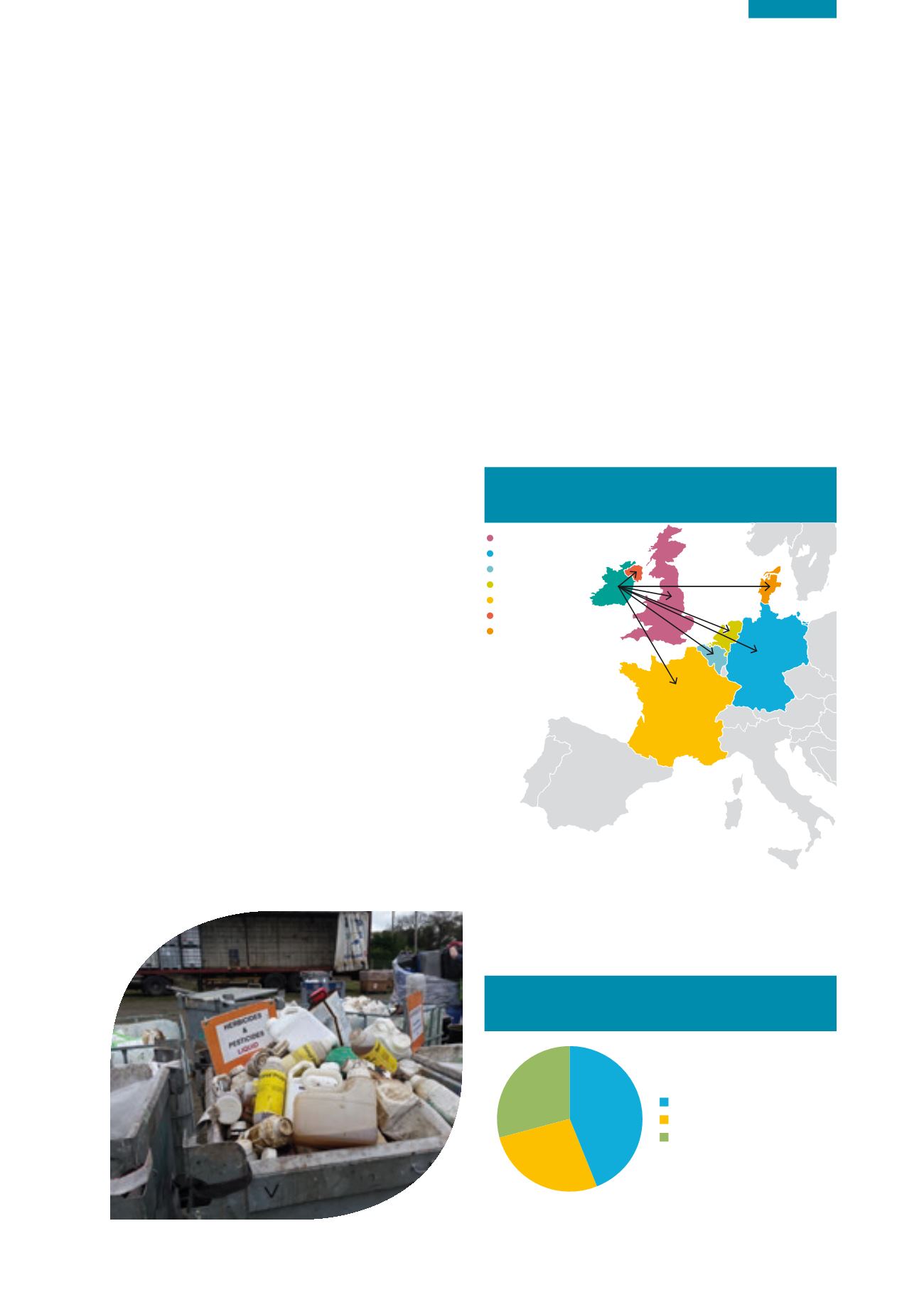

99
Chapter 6: Waste
Management of Animal By-products
Animal by-products are regulated because of the risk
they pose to human and animal health.
Animal by-products (ABPs) are defined as “entire bodies
or parts of animals, products of animal origin or other
products obtained from animals that are not intended for
human consumption”. ABPs can present a risk to human
and animal health and their use or disposal is covered by
EU legislation.
Approximately 500,000 tonnes of raw ABPs is produced
in Ireland each year and is mainly rendered to produce
meat-and-bone-meal (MBM) and tallow. Other ABPs that
do not spring directly from the meat industry, such as
former foodstuffs, are more commonly used as feedstock
for composting (DAFM, 2015).
In 2014, renderers accepted 226,000 tonnes of Category 1
material (high risk) and 250,000 tonnes of Category 3 (low
risk) material. Processing of Category 1 material produced
61,000 tonnes of MBM and 27,000 tonnes of biofuel.
Processing of Category 3 material yielded 70,000 tonnes
of meal for pet food and 33,000 tonnes of tallow used
for animal feed and industrial uses (Federation of Irish
Renderers, 2016).
Hazardous Waste Management
Prevention comes first but Ireland is dependent on
exporting for treatment.
The current National Hazardous Waste Management
Plan (NHWMP) for 2014‑2020 (EPA, 2014b) sets out the
priorities to improve the management of hazardous waste,
including hazardous waste prevention, maximise the
collection of hazardous waste, strive for self-sufficiency
in hazardous waste management and minimise the
environmental, health, social and economic impacts of
hazardous waste generation and management.
There is no commercial hazardous waste landfill in the State,
and there are limited hazardous waste treatment operations
(these are mainly used for oil recovery, healthcare waste
treatment and solvent reclamation), meaning that Ireland
is dependent on export for treatment of many hazardous
waste streams. The NHWMP identifies three strategic needs
if additional hazardous waste is to be treated in Ireland:
(1) expansion of physico-chemical treatment, (2) addressing
the deficit in thermal treatment capacity, and (3) securing
long-term disposal arrangements for hazardous waste streams
not suitable for thermal treatment or recovery. Ireland would
be vulnerable in the event of a crisis such as an infectious
disease outbreak. Figure 6.8 shows the destination of
exported hazardous waste in 2014 (EPA, 2016a). The majority
of waste exports were to the UK, Germany and Belgium.
Figure 6.8
Destination of Exported Hazardous
Waste, 2014 (Source: EPA, NTFSO)
Great Britain
37%
Germany
28%
Belgium
25%
Netherlands
5%
France
3%
Northern Ireland
1%
Denmark
<1%
Northern
Ireland
Great Britain
Germany
Denmark
Belgium
France
Netherlands
The amount of hazardous waste generated, and its treatment
pathways, have remained relatively unchanged in recent
years (Figure 6.9). An example of waste treated on site of
generation is waste solvent incinerated at industrial facilities.
Figure 6.9
Treatment of Hazardous Waste, 2014
(Source: EPA)
Exported
44%
Treated on site of generation
27%
Treated at commercial facilities
29%


















